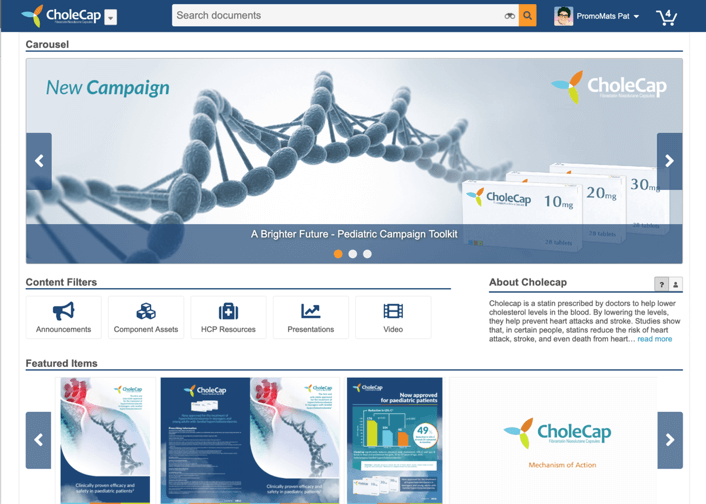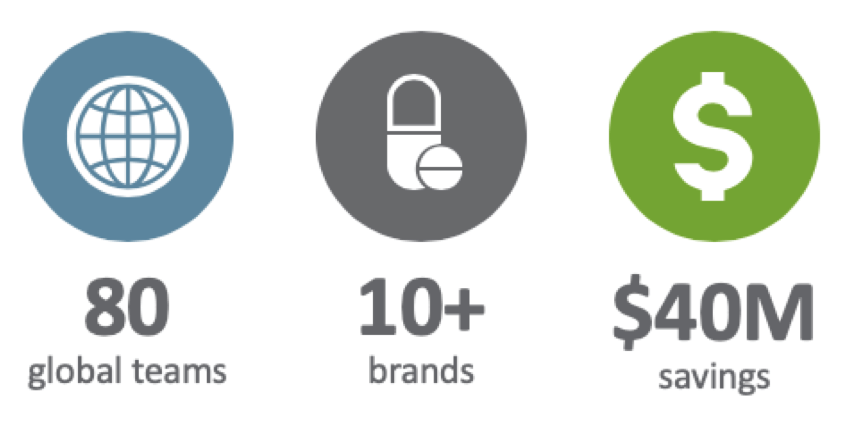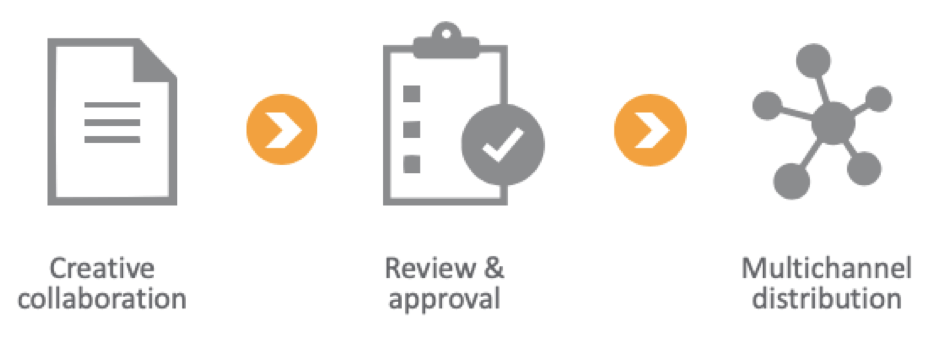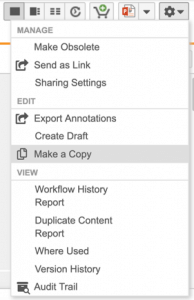Blog
Best Practices in Life Sciences Content Marketing
Jul 01, 2019 | Maria Ruoto
Jul 01, 2019 | Maria Ruoto
Since the launch of Vault PromoMats in 2011, we’ve learned a lot from our customers on what good content (and good content management) looks like.
Today, we’re continuing to partner with the industry to explore new areas of innovation and change the way life sciences companies think about promotional materials – from advancing digital asset management (DAM) to simplifying content distribution.
Here are the top 4 best practices in life sciences content marketing today:
1. Digital asset management (DAM): consistent metadata and brand portals keep content organized and easy to find.
With over 4.5 million approved documents across all customer instances of Vault PromoMats, organizing content is key. Without it, finding the right materials is near impossible.
Many of our customers maintain detailed, consistent metadata (the data that characterizes documents) to help end users quickly access content for distribution or localization.
They also often rely on a dedicated owner for their DAM — like a librarian — to help enforce rules on metadata and oversee system governance. Check out BioMarin’s tips on why you need a DAM librarian.

Vault PromoMats Brand Portal lets brand teams showcase top assets
Brand teams are also making it easier for users to access and reuse important digital content with Vault PromoMats Brand Portal. This tool provides a central location to curate and showcase top assets. Easy to navigate, brand portals save end users the time needed to search through the entire Vault library.
While life sciences companies are using Brand Portal to highlight important product information by brand or therapeutic area, they’re also exploring other creative use cases like sales training portals.
2. Content reuse: reusing content saves money, time, and the hassle of duplicating efforts.
When it comes to investing in DAM, our customers are most excited about content reuse and localization. Companies of all sizes have benefited from organizing DAM around sharing and distributing approved content with teams, whether they’re in an adjacent city or across the globe.
Reusing materials maintains a consistent brand, lowers costs, and saves time. And, having a central repository for materials guarantees that everyone uses only approved content.

One of our larger customers (80 global teams and 10+ brands) has estimated savings of around $40 million when they create and efficiently reuse assets. For them and other successful companies, effective content reuse boils down to three steps:
- Have a process in place: outline a detailed, specific process for how to use DAM, including rules for agencies vs. brand teams. Agencies should be as familiar with Vault PromoMats as are the internal teams. For marketers, documenting a clear plan for how to find and reuse content is key.
- Train and retrain: train all user groups – including agencies – on how to use Vault PromoMats and how to follow system guidelines on metadata and taxonomy. Continue to retrain teams as the organization implements new features or update processes.
- Define and measure results: define key metrics for success such as cost savings, time savings, and the percentage of content reused. Identify clear goals against these metrics, and measure diligently to monitor progress. Continue to refine the program until everyone is happy with the level of reuse.
3. Localizing content: understand and define local processes to meet regional requirements.
Starting with a uniform, global DAM process is vital for ensuring success. Without company-wide consistency, the searchability of the system will fall apart. However, companies need some flexibility in order to stay compliant with regional regulations.
Many of our more mature customers have begun to incorporate region-specific requirements into their DAM structure and governance. Their local teams keep the home office informed of the latest regional regulations, and how they plan to modify processes to meet these requirements.
Giving each region the ability to adjust global DAM workflows to better align to their needs encourages content reuse and localization; teams know they can tweak content to meet local guidelines on content review, approval, and distribution.
4. Distribution across channels: direct integration with Veeva CRM and one-click digital publishing makes it easier for brand teams to share approved messages.
Our customers have strong processes in place to review and approve content – but they know the job isn’t done until they push the right messages to the market.
When it comes to sharing approved materials with the field, marketing teams are making use of the direct integration between Vault PromoMats and Veeva CRM. Treating these two products as one continuous system gives them the power to ensure only approved, compliant materials reach reps.

For the sales team, accessing assets like detail aids is easy and quick; the content library in Veeva CRM pulls source materials directly from Vault. For marketing teams, maintaining and sharing a single source of truth for content makes distribution simple; with single document publishing, brand managers can approve a detail aid in Vault PromoMats and, at the same time, push this asset into Veeva CRM. This helps teams control their core brand messages and save time replicating changes across duplicate files in Vault and CRM.
Our customers also use Vault PromoMats to share compliant content to the web. Vault PromoMats’ Digital Publishing feature lets brand teams push approved content within Vault PromoMats to the company’s website, all with a single click. Centralizing control of web content means only the latest and greatest assets are published.
For more customer best practices, check out GSK’s tips for launching DAM across global teams.
